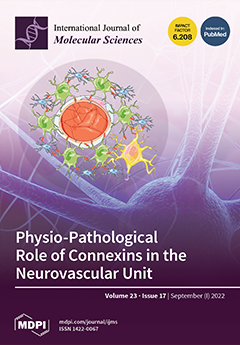Bone mass reduction due to an imbalance in osteogenesis and osteolysis is characterized by low bone mineral density (LBMD) and is clinically classified as osteopenia (ON) or osteoporosis (OP), which is more severe. Multiple biomarkers for diagnosing OP and its progression have been reported; however, most of these lack specificity. This cohort study aimed to investigate sensitive and specific LBMD-associated protein biomarkers in patients diagnosed with ON and OP. A label-free liquid chromatography-mass spectrometry (LC-MS) proteomics approach was used to analyze serum samples. Patients’ proteomics profiles were filtered for potential confounding effects, such as age, sex, chronic diseases, and medication. A distinctive proteomics profile between the control, ON, and OP groups (Q
2 = 0.7295, R
2 = 0.9180) was identified, and significant dysregulation in a panel of proteins (
n = 20) was common among the three groups. A comparison of these proteins showed that the levels of eight proteins were upregulated in ON, compared to those in the control and the OP groups, while the levels of eleven proteins were downregulated in the ON group compared to those in the control group. Interestingly, only one protein, myosin heavy chain 14 (MYH14), showed a linear increase from the control to the ON group, with the highest abundance in the OP group. A significant separation in the proteomics profile between the ON and OP groups (Q
2 = 0.8760, R
2 = 0.991) was also noted. Furthermore, a total of twenty-six proteins were found to be dysregulated between the ON and the OP groups, with fourteen upregulated and twelve downregulated proteins in the OP, compared to that in the ON group. Most of the identified dysregulated proteins were immunoglobulins, complement proteins, cytoskeletal proteins, coagulation factors, and various enzymes. Of these identified proteins, the highest area under the curve (AUC) in the receiver operating characteristic (ROC) analysis was related to three proteins (immunoglobulin Lambda constant 1 (IGLC1), RNA binding protein (MEX3B), and fibulin 1 (FBLN1)). Multiple reaction monitoring (MRM), LC-MS, was used to validate some of the identified proteins. A network pathway analysis of the differentially abundant proteins demonstrated dysregulation of inflammatory signaling pathways in the LBMD patients, including the tumor necrosis factor (TNF), toll-like receptor (TL4), and interferon-γ (IFNG) signaling pathways. These results reveal the existence of potentially sensitive protein biomarkers that could be used in further investigations of bone health and OP progression.
Full article






